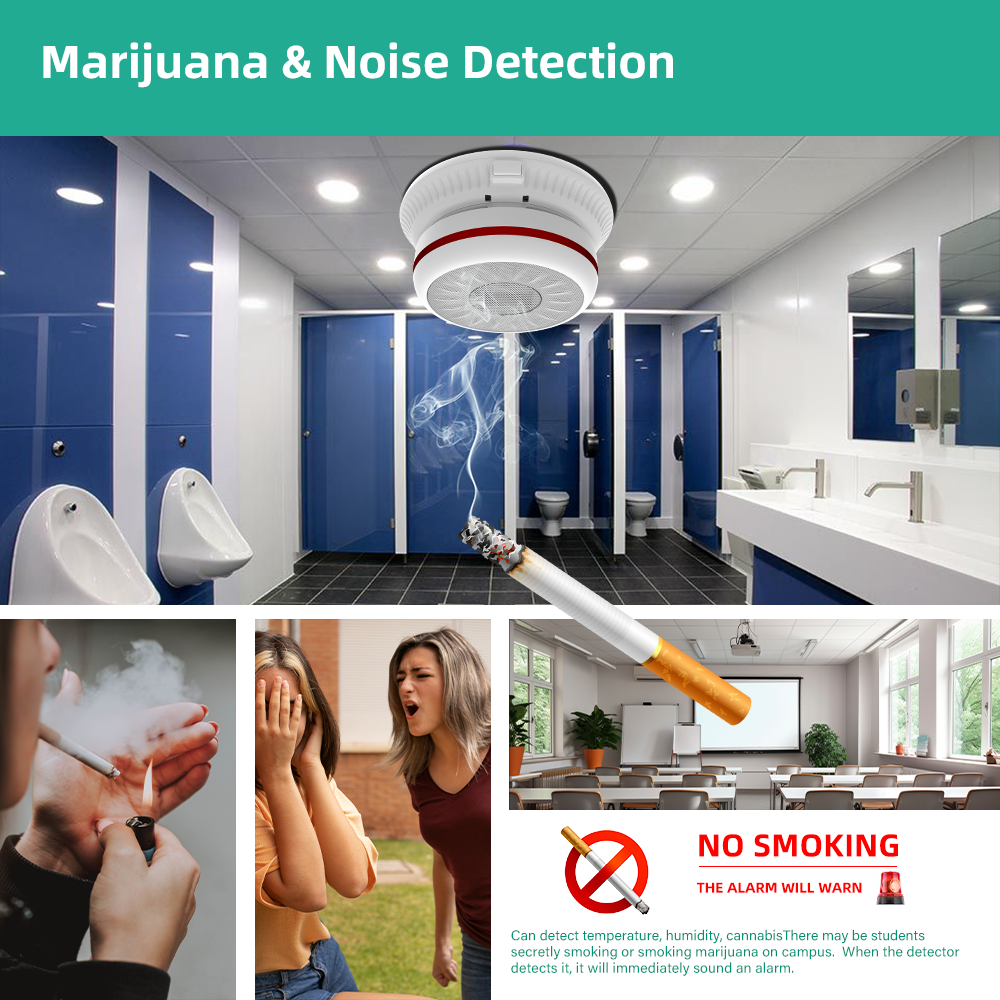Each day, for every 3 minutes in American schools, there’s a hidden epidemic: a student vapes. Public health experts label vaping by teens as a crisis as well, with the CDC declaring that more than 40 percent of high schoolers and 20% of middle schoolers have had a go at e-cigarettes. Most of these devices (99 percent) have nicotine in them, a substance that can be addictive that rewires the brain in its developing stages and is frequently employed as a means to transition into smoking cigarettes. Teachers, parents as well as administrators are feeling increasing pressure to be more proactive. The vape detector is an advanced gadget that has become an essential piece of equipment for campuses. Among the leaders, Triton and 3D Sense stand out as vape detectors for schools which do more than just sounding an alarm.
How do Vape Detectors perform: Accuracy without intrusion
A modern smoke detector for vapes such as the Triton ULTRA Safety Sensor isn’t dependent on recording or cameras to guarantee the highest level of privacy and still providing actionable information. Instead, it employs sophisticated sensors for particulate matter to study air in real time. The device will notify staff via email or text when vape aerosols, or masking agents, for instance heavy perfumes, are detected. False positives are very low, giving administrators confidence that every notification demands immediate attention.

The cost of deployment can be reduced if one unit is able to cover a space. After five weeks of installation, Triton customers typically report a significant drop in the amount of vaping they do. What is the reason? Data-driven deterrence. Triton Cloud Dashboard gives a “hotspot” of where and when vaping is occurring typically. Principals can then control security personnel or hall monitors in the areas where they’re most needed.
Beyond Detection, Occupancy Visualization & Loitering Control
What is what sets Triton apart from basic vape detectors is the patent-pending occupancy display technology. The ULTRA Sensor records the time spent in a room without capturing any audio or images. Administrators are able to view heat maps colored by color showing the times when bathrooms are transformed into social hubs that are prime for both vaping and the long-term close contact that can spread respiratory diseases.
Stanford Medicine research emphasizes the stakes. Students who vape are 5 times more likely than others to develop COVID-19. Vape detectors in schools help improve air quality by reducing the concentration of. They also lower the risks of airborne pathogens spreading. Following the pandemic, this benefits have elevated these devices from a mere option to mandatory.
Transforming Data into Discipline and Dialogue
Numbers can tell a story. The Triton reports module compiles quantitative evidence incident timestamps, frequencies, locations and other information that schools can present to the school board, parent groups and even to students themselves. There is less skepticism when campuses show 60% fewer detections after detector installation. Parents are able to see the commitment and students can understand the implications.
The educators can improve the effectiveness of their message simply by announcing that smoke detectors for vapes are available from day one. The 3D Sense model, for instance, explicitly markets itself as an effective deterrent. “Let students know that the air itself is watching,” guidance materials advise. Peer accountability follows: the social price of activating an alert frequently outweighs any instruction.
A Multi-Front Strategy Schools Can’t Ignore
A single device cannot stop vaping however vape detectors form part of an entire approach
Alerts in real-time detect incidents in progress.
Education – Evidence-based research fuels the anti-vaping curriculum.
Dissuasion – Signage visible and the consequences that are known to change behaviour.
Discipline – Hotspot data justifies targeted enforcement.
Support – Schools integrate detections with support to help students struggling to stop smoking.
The CDC emphasizes that reversing this trend will require “buy-in” from educators, parents, and the general public. Vape detectors are the missing link – real-time, instant feedback that transforms good intentions into tangible results.
Simple Installation
Triton Cloud Dashboard makes it simple to sign up your devices. Administrators can add contacts, alter notifications, and set alarm thresholds. One demonstration will show the ease of use. You can schedule demos and watch live hotspot maps and graphs in motion.
Conclusion
Each puff left unnoticed could be the beginning of dependence for a long time. Inadvertent bathroom visits could be harmful to your health as in terms of safety. Vape detectors for schools like Triton and 3D Sense offer more than surveillance they deliver intelligence, deterrence, and proof of progress. The campuses that install them don’t just react to the issue of vaping; they manage it.
These tools transform vague worries into real victories. With just one sensor for every room and security-grade occupancy information that can help transform naive concerns into concrete ones. In an era when 40% of high school students have tried out the technology in middle school, and the number of middle school students increasing daily, waiting longer is logical. Be sure that you’re the first ones to be able to hear what your school’s media is proclaiming.
